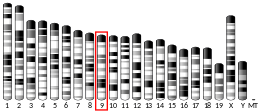ECSIT
Evolutionarily conserved signaling intermediate in Toll pathway, mitochondrial (ECSIT), also known as SITPEC, is a protein that in humans is encoded by the ECSIT gene.[5] ECSIT is a cytosolic adaptor protein involved in inflammatory responses, embryonic development, and the assembly and stabilization of mitochondrial NADH:ubiquinone oxidoreductase (complex I).[6]
| ECSIT | |||||||||||||||||||||||||
|---|---|---|---|---|---|---|---|---|---|---|---|---|---|---|---|---|---|---|---|---|---|---|---|---|---|
| Identifiers | |||||||||||||||||||||||||
| Aliases | ECSIT, SITPEC, ECSIT signalling integrator, ECSIT signaling integrator | ||||||||||||||||||||||||
| External IDs | OMIM: 608388 MGI: 1349469 HomoloGene: 8080 GeneCards: ECSIT | ||||||||||||||||||||||||
| |||||||||||||||||||||||||
| |||||||||||||||||||||||||
| |||||||||||||||||||||||||
| Orthologs | |||||||||||||||||||||||||
| Species | Human | Mouse | |||||||||||||||||||||||
| Entrez | |||||||||||||||||||||||||
| Ensembl | |||||||||||||||||||||||||
| UniProt | |||||||||||||||||||||||||
| RefSeq (mRNA) | |||||||||||||||||||||||||
| RefSeq (protein) | |||||||||||||||||||||||||
| Location (UCSC) | Chr 19: 11.51 – 11.53 Mb | Chr 9: 22.07 – 22.09 Mb | |||||||||||||||||||||||
| PubMed search | [3] | [4] | |||||||||||||||||||||||
| Wikidata | |||||||||||||||||||||||||
| |||||||||||||||||||||||||
Structure
ECSIT is located on the p arm of chromosome 19 in position 13.2 and has 9 exons.[7] The ECSIT gene produces a 49 kDa protein composed of 431 amino acids.[8] ECSIT's interactions with p65/p50 NF-κB proteins is dependent on lysine 372 ubiquitination.[9] ECSIT also contains an N-terminal targeting signal that causes it to localize to mitochondria where only the 45 kDa mitochondrial ECSIT is found to interact.[6]
Function
ECSIT has been found to play multiple roles in cell-signaling, including those that utilize Toll-like receptors (TLRs), TGF-β, and BMP. ECSIT plays a regulatory role as part of the TAK1-ECSIT-TRAF6 complex that is involved in the activation of NF-κB by the TLR4 signal and through its interactions with TRIM59 to negatively regulate NF-κB, IRF-3, and IRF-7-mediated signal pathways.[10][11] Additionally, ECSIT appears to contribute to bactericidal activity in TLR signaling through its interaction with tumor necrosis factor receptor-associated factor 6 (TRAF6). Importantly, ubiquitination of ECSIT has shown itself to be necessary for the activation of p65/p50 NF-κBs in TLR4 signaling.[9] Functioning as a scaffold protein, ECSIT is also essential for the association of RIG-I-like receptors (RIG-I or MDA5) to VISA. The bridging of these receptors to VISA is an important signaling event used in innate antiviral responses.[12] Apart from inflammatory and immune responses, ECSIT, in its 45 kDa, mitochondrial form helps maintain assembly chaperone NDUFAF1's stable presence in the mitochondrion. Through this interaction, ECSIT is demonstrated to play an important role in NADH:ubiquinone oxidoreductase (complex I) assembly and stabilization.[6] Finally, it is important to note that ECSIT is required for normal embryonic development.[5]
Interactions
ECSIT has 136 protein-protein interactions, with 53 of them being co-complex interactions.[13]
In addition to TAK1, TRAF6, TRIM59, RIG-I-like receptors, VISA, and NDUFAF1 interactions, ECSIT can interact with MAP3K1 and SMAD4, and is a part of the mitochondrial complex I assembly (MCIA) complex.[5]
References
- GRCh38: Ensembl release 89: ENSG00000130159 - Ensembl, May 2017
- GRCm38: Ensembl release 89: ENSMUSG00000066839 - Ensembl, May 2017
- "Human PubMed Reference:". National Center for Biotechnology Information, U.S. National Library of Medicine.
- "Mouse PubMed Reference:". National Center for Biotechnology Information, U.S. National Library of Medicine.
- "ECSIT - Evolutionarily conserved signaling intermediate in Toll pathway, mitochondrial precursor - Homo sapiens (Human) - ECSIT gene & protein". uniprot.org. Retrieved 2018-07-27.
- Vogel RO, Janssen RJ, van den Brand MA, Dieteren CE, Verkaart S, Koopman WJ, Willems PH, Pluk W, van den Heuvel LP, Smeitink JA, Nijtmans LG (March 2007). "Cytosolic signaling protein Ecsit also localizes to mitochondria where it interacts with chaperone NDUFAF1 and functions in complex I assembly". Genes & Development. 21 (5): 615–24. doi:10.1101/gad.408407. PMC 1820902. PMID 17344420.
- "ECSIT ECSIT signalling integrator [Homo sapiens (human)] - Gene - NCBI". ncbi.nlm.nih.gov. Retrieved 2018-07-30.
- Yao, Daniel. "Cardiac Organellar Protein Atlas Knowledgebase (COPaKB) —— Protein Information". amino.heartproteome.org. Retrieved 2018-07-27.
- Mi Wi S, Park J, Shim JH, Chun E, Lee KY (January 2015). "Ubiquitination of ECSIT is crucial for the activation of p65/p50 NF-κBs in Toll-like receptor 4 signaling". Molecular Biology of the Cell. 26 (1): 151–60. doi:10.1091/mbc.E14-08-1277. PMC 4279226. PMID 25355951.
- Kondo T, Watanabe M, Hatakeyama S (June 2012). "TRIM59 interacts with ECSIT and negatively regulates NF-κB and IRF-3/7-mediated signal pathways". Biochemical and Biophysical Research Communications. 422 (3): 501–7. doi:10.1016/j.bbrc.2012.05.028. hdl:2115/49795. PMID 22588174.
- Wi SM, Moon G, Kim J, Kim ST, Shim JH, Chun E, Lee KY (December 2014). "TAK1-ECSIT-TRAF6 complex plays a key role in the TLR4 signal to activate NF-κB". The Journal of Biological Chemistry. 289 (51): 35205–14. doi:10.1074/jbc.M114.597187. PMC 4271209. PMID 25371197.
- Lei CQ, Zhang Y, Li M, Jiang LQ, Zhong B, Kim YH, Shu HB (2015). "ECSIT bridges RIG-I-like receptors to VISA in signaling events of innate antiviral responses". Journal of Innate Immunity. 7 (2): 153–64. doi:10.1159/000365971. PMC 6738808. PMID 25228397.
- "136 binary interactions found for search term ECSIT". IntAct Molecular Interaction Database. EMBL-EBI. Retrieved 2018-08-25.
Further reading
- Hendrickson SL, Lautenberger JA, Chinn LW, Malasky M, Sezgin E, Kingsley LA, Goedert JJ, Kirk GD, Gomperts ED, Buchbinder SP, Troyer JL, O'Brien SJ (September 2010). "Genetic variants in nuclear-encoded mitochondrial genes influence AIDS progression". PLOS One. 5 (9): e12862. Bibcode:2010PLoSO...512862H. doi:10.1371/journal.pone.0012862. PMC 2943476. PMID 20877624.
This article incorporates text from the United States National Library of Medicine, which is in the public domain.



